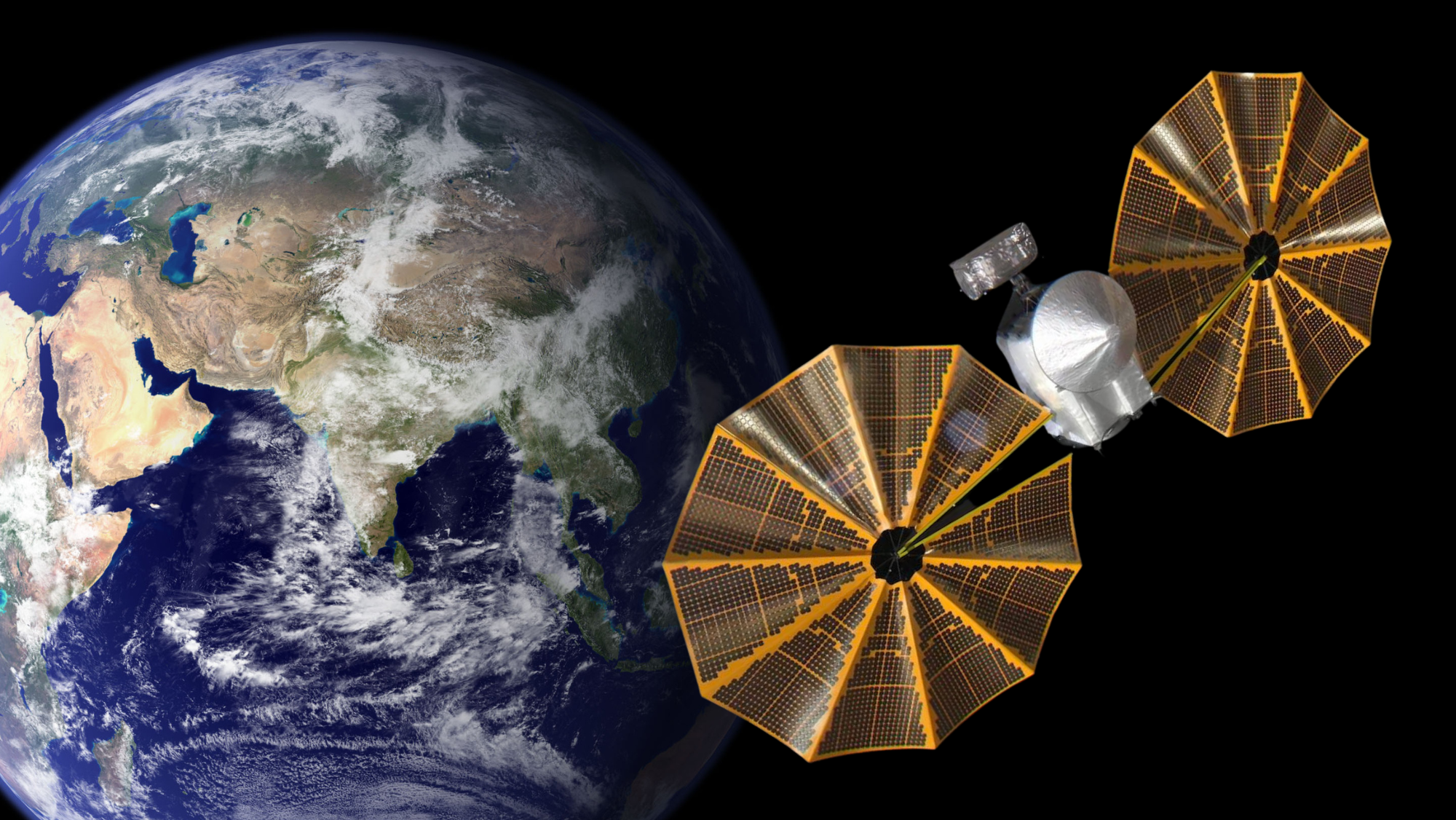NASA's Lucy asteroid-scouting mission resumes work on solar arrays in deep space
Mission team attempts to fully deploy solar wing hit small snag.

The team behind NASA's Lucy asteroid mission is resuming work with the spacecraft to fully deploy and latch its second solar array after a recent successful Earth flyby.
Lucy conducted the first of three planned Earth flybys on Oct. 16, exactly a year after its launch. Now the spacecraft has resumed high-data-rate communication with Earth and is operating well in space, according to a Nov. 18 NASA update.
The team has also resumed trying to complete the deployment of its 24-feet-wide (7 meters) solar arrays, as one of the pair did not fully unfold and latch in the days following launch.
Related: Meet the asteroids NASA's Lucy spacecraft will visit
The spacecraft was instructed to point toward the sun and fire its array deployment motors for a short period of time on Nov. 7, according to the NASA statement. The operation saw the array deploy a little more fully, but the array still did not latch open, so the solar wing still resembles a pie with a tiny slice missing.
According to the NASA update, analysis of the operation found a small vibration when the unlatched array interacted with the spacecraft's attitude controller that maintains the spacecraft's position; that vibration hadn't occurred during a previous deployment attempt in June. The team determined that the vibration is too minor to pose a risk to the spacecraft, but is holding off from further deployment attempts while the attitude controller is updated.
The team does not think that the array issue poses a threat to the 12-year-long tour of nine asteroids, but getting the array fully deployed and latched would boost confidence in the spacecraft's performance, according to the statement.
Get the Space.com Newsletter
Breaking space news, the latest updates on rocket launches, skywatching events and more!
Lucy's science payloads got a workout during the recent Earth flyby — including snapping enchanting images of the moon — and were found to be functioning as expected. The gravity assist maneuver also proved an excellent moment to test out the spacecraft's systems and mission procedures, according to the statement.
The spacecraft is scheduled to use a second Earth flyby in 2024 to gain enough speed to visit a handful of Trojan asteroids orbiting at Lagrange point 4, ahead of Jupiter in its orbit around the sun. After this, a final Earth flyby in 2030 will fling Lucy out toward a few Trojans trailing Jupiter, at Lagrange point 5.
Follow us on Twitter @Spacedotcom and on Facebook.
Join our Space Forums to keep talking space on the latest missions, night sky and more! And if you have a news tip, correction or comment, let us know at: community@space.com.

Andrew is a freelance space journalist with a focus on reporting on China's rapidly growing space sector. He began writing for Space.com in 2019 and writes for SpaceNews, IEEE Spectrum, National Geographic, Sky & Telescope, New Scientist and others. Andrew first caught the space bug when, as a youngster, he saw Voyager images of other worlds in our solar system for the first time. Away from space, Andrew enjoys trail running in the forests of Finland. You can follow him on Twitter @AJ_FI.









